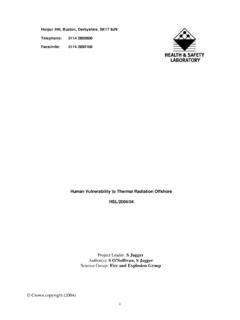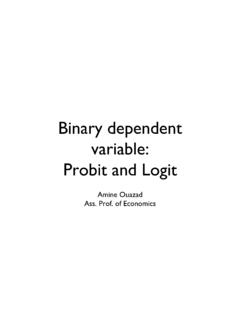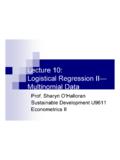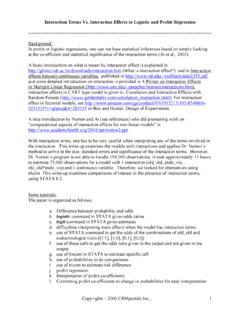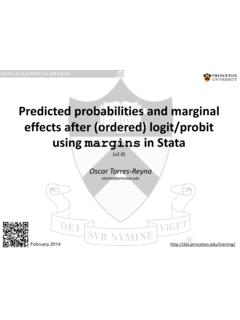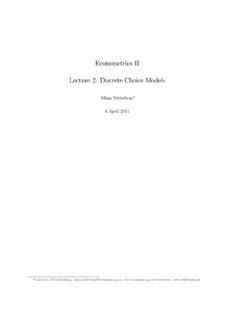Transcription of Discrete Choice Experiment (DCE): a methodology …
1 Discrete Choice Experiment (DCE):a methodology for elicitinghealth workers preferencesGenevaJanuary 3rd2009 Christophe Lemiere / WB / Washington DCDiscrete Choice Experiment The Stated Preference methodologies: a large family (conjoint analysis, contingent ) An increasingly popular methodology for eliciting HW preferences regarding rural jobs: Indonesia, Malawi, Ethiopia, : a cheap and easy survey instrument A sample of HW are asked to choose between job descriptions (arranged in about 15 pairs). Less than one hour per surveyed person A small sample ( 100) is enoughMalawi by Mangham 2007 Why DCE is better than other methodologies for eliciting preferences (1/2) ? A normal questionnaire on the same attributes will not get results as strong and as useful as in DCE:1. Because we are not good at assessing our preferences. We can rank them (to some extent), along an ordinal scale, but we have difficulties to assign absolute values to our preferences.
2 Example: 2. Because when people are asked to rate an attribute, they will reply that it depends . We always make trade-offs (usually implicitly), that are difficult to measured in a normal (ordinal)3 strongest200 kms100 kms0 kmDistance from capital cityWhy DCE is better than other methodologies for eliciting preferences (2/2) ? With a DCE, trade-offs are easily revealed and measured (in wage-equivalent):doctorsnurses+75%+30%Et hiopia by Hanson & Jack 2008 DCE: strengths and the sake of statistical quality and practical feasibility, DCE cannot be used with too many attributes (whatever the sample size) Therefore, you must already know what are the most important data collection is simple, questionnaire design ( fractional factorial design) and data analysis (random effects probit) can be quite useful for policymakers (for designing policies type B and even C ), as it measures trade-offs in that DCE in HW retention has always been used after an intervention (so far), we are not sure whether DCE stated preferences are good predictors of actual HW choices.
3 But evidence in other DCE applications is impressive.










